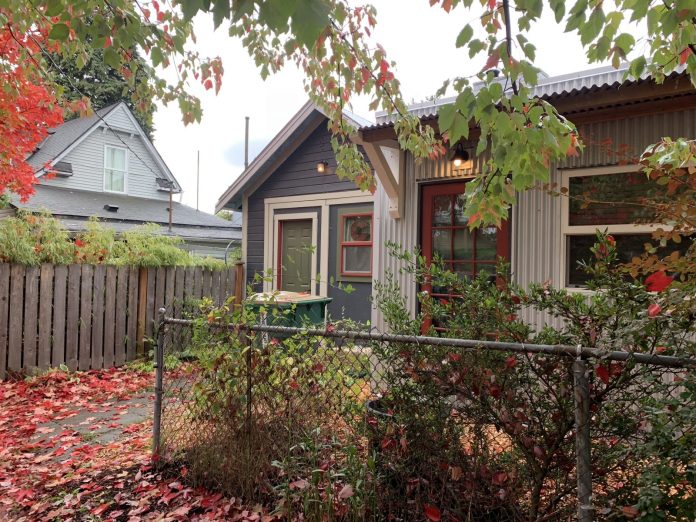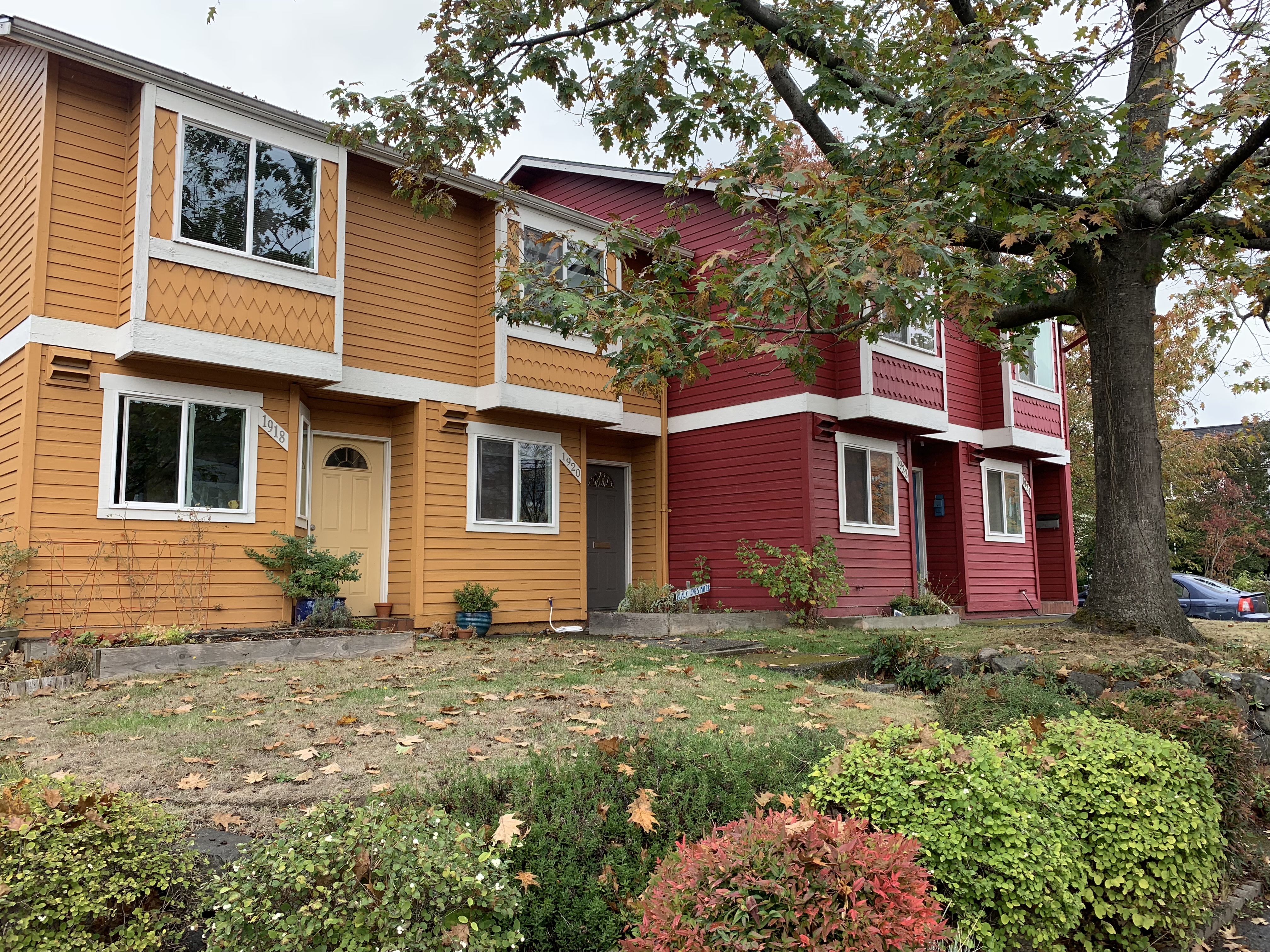
The City’s proposed changes for accessory dwelling units lacks Portland and Vancouver’s ambition.
On October 4th, the City of Seattle released its Final Environmental Impact Statement (EIS) for land use code changes to remove barriers to the creation of accessory dwelling units (ADU) and detached dwelling units (DADU). The EIS also proposed size restrictions on construction of new single-family homes. Taken together, the two measures are intended to increase and preserve affordable housing stock throughout the city.
The measure is a step forward from Seattle’s current policies, but when compared to Portland’s Residential Infill Project, or the more liberal ADU policies of Vancouver, BC, it lacks ambition.
It has also taken a long time for Seattle to get to this point. Since initial citywide legalization of ADUs in 2010, Seattle has been inching toward removing regulatory barriers to make it easier to allow for property owners to permit and build them.
Mayor Jenny Durkan spoke in favor of adding “gentle density” to single dwelling zoned neighborhoods during her campaign. The publication of the Final EIS, which puts forth the City’s “Preferred Alternative” is the first proposal Seattleites have seen come forward under her and the current council’s leadership that addresses this issue.
Dan Bertolet of Sightline Institute gives credit to the proposal’s merits, while also maintaining concerns.
Bertolet is optimistic that the Preferred Alternative will survive the appeals process and eventually gain Seattle City Council approval in 2019, but he also recognizes the negative impact of the City’s sluggish pace in addressing the issue, as well as the shortcomings of the current plan.
“Too bad for Seattle’s housing crisis that it will have taken over three years to get such a modest but important set of rule changes across the finish line,” wrote Bertolet in his response to the Preferred Alternative, which offers a point-by-point take on the strengths and weaknesses of the proposal.

Bertolet’s Cheat Sheet
Bertolet’s “cheat sheet” breaks down the Preferred Alternative as follows:
The good:
- Allowance for two ADUs per lot, with the option that both ADUs can be mother-in-laws—that is, ADUs attached to the main house (AADUs);
- Removal of off-street parking requirements for ADUs;
- Elimination of the requirement for the owner to live on site if a house has an ADU;
- Allowance for one to two additional feet of height for detached ADUs (DADUs) that incorporate green building features; and
- No mandatory housing affordability requirements on ADUs.
The good-but-wish-it-went-further:
- Increase of DADU maximum floor area from 800 to 1,000 square feet;
- Reduction of the minimum lot size for DADUs from 4,000 to 3,200 square feet;
- Allowance for one to three feet of additional DADU height, depending on lot width;
- Increase of the maximum number of unrelated residents allowed on one lot from eight to 12;
- Increase of rear yard lot coverage limit from 40% to 60% for DADUs no taller than 15 feet; and
- Allowance for ADU entries on any facade, with minimum distance of 10 feet from property lines.
The bad:
- New prohibition on the construction of a second ADU unless the property has been in the same ownership for at least one year.
The wild card:
- A new and wholly unprecedented size limit on all new houses built in single-family zones citywide, whether or not an ADU is involved.
A McMansion Ban But No Encouragement of “Missing Middle” Housing
The wild card referred to in Bertolet’s cheat sheet is a restriction on floor area ratios for new single family homes, otherwise known as a “McMansion” ban.
In the Preferred Alternative, new homes could be constructed at a maximum of 2,500 square feet or a floor area ratio of 0.5, or no more the half the square footage of the lot.
Considering that in 2018 the average size of a new single-family home in US is 2,641 square feet, with many new homes exceeding that size, the restriction does represent an improvement.
However, the proposed policy does not go nearly as far as Portland’s Residential Infill Project, which also imposes size restrictions on new single-family homes. As Doug Trumm reported for The Urbanist in 2017, Portland’s policies go further encourage construction more modest housing that moderate-income people can afford by setting more stringent single-family home size restrictions, a maximum of 2,000 square feet on a 5,000 square foot lot. Even more importantly, Portland’s size restrictions are paired with legalization of duplexes and corner lot triplexes, often referred to as “missing middle housing.”
Recent public hearings on the Residential Infill Project in Portland have pushed the legislation go even farther to create missing middle housing throughout Portland’s single-dwelling zoned neighborhoods.
Revised proposals widen the range of housing types to include triplexes and fourplexes in single-dwelling zone, broaden the area where these housing choices would be allowed, provide incentives to retain existing houses by splitting them into multiple units, and create more flexibility for ADUs to incentivize their construction.
The pressure is on in Portland to preserve neighborhood character, while increasing the amount of affordable housing, as residents have watched small affordable homes in single-family neighborhoods get replaced by larger more expensive homes.
“If we continue our pattern of development today of tearing down smaller existing homes and building much larger single-family homes, we will lose the opportunity to create more housing options,” said Planning and Sustainability Commision Chair Katherine Schultz. “With our amendments, we’re prioritizing a wide range of housing types over single-family homes, internal conversions over demolition, the environment over increased consumption of land, and great neighborhoods for people of all ages, incomes and abilities.”
The Portland City Council will vote on the revised Residential Infill legislation later this fall.

Seattle Needs ADUs and Missing Middle Housing
ADUs have been long identified by experts as a means to insert “stealth density” into existing neighborhoods. By providing small housing choices, ADUs increase a neighborhood’s walkability and affordability, while also helping to cut carbon emissions. The City of Seattle has formally acknowledged the benefits of ADUs for increasing affordable housing choices and included language to support their construction in the City’s Comprehensive Plan.
But current permitting costs and regulatory restraints limit this housing option in Seattle. According to Crosscut, between 1995 (when basement apartments were first approved) and 2016, only about 682 ADUs were built. The numbers for DADUs is even worse. Only 292 DADUs have been constructed since 2009.
As a whole, it’s estimated that only 1% of single-family lots in Seattle have an ADU or DADU.
By contrast, in Vancouver, BC, a pioneer in ADU land use code liberalization, roughly 35% of single-family lots have ADUs, which they refer to as “laneway housing,” resulting in about 25,300 ADUs and 1,350 DADUs across the city.
While Seattle’s Preferred Alternative represents an improvement over the policies of the past, it still falls far short of the policies of Vancouver, BC, and Portland.
That it is so much less ambitious than Portland’s proposed Residential Infill legislation may not be surprising, but it is certainly disappointing.
Regretfully, by including restrictions that will reduce the number of ADUs and DADUs constructed, as well as declining the opportunity to open the door to legalization of missing middle housing, the City of Seattle continues to fail to maximize the creation of affordable rental and ownership housing choices for low- and middle-income residents at a time in which the threats of displacement and homelessness are real and increasing.
Natalie Bicknell Argerious (she/her) is a reporter and podcast host at The Urbanist. She previously served as managing editor. A passionate urban explorer since childhood, she loves learning how to make cities more inclusive, vibrant, and environmentally resilient. You can often find her wandering around Seattle's Central District and Capitol Hill with her dogs and cat. Email her at natalie [at] theurbanist [dot] org.

